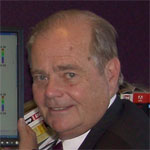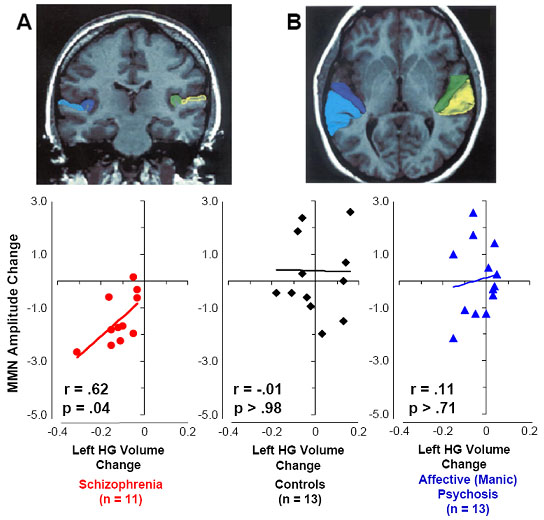Robert W. McCarley, MD

Contact
Ms Marie Fairbanks, Program Administrator, marie_fairbanks@hms.harvard.eduBiography
Dr. McCarley graduated from Harvard College summa cum laude and from Harvard Medical School as a National Scholar. He is currently Professor and Chair of the Harvard Medical School Department of Psychiatry and Associate Director of Mental Health at the VA Boston Healthcare System. Dr. McCarley has received the top research prizes of the American Psychiatric Association, the U.S. Department of Veterans Affairs, the U.S. Sleep Research Society, and the American Academy of Sleep Medicine. He has published more than 300 peer-reviewed papers, 9 in Science, and has received consistent peer reviewed funding from the U.S. NIH and the VA Medical Research Service, where he is PI of a VA Schizophrenia Center as well as this CIDAR study. His NIH awards include two consecutive 10 year MERIT awards for the study of the neurobiology of sleep mechanisms.Research Summary
Intending in college to work in psychoanalysis, Dr. McCarley became enthralled with neuroscience in medical school. During and after psychiatric residency at Mass. Mental Health Center, he worked on single unit recording in the brainstem seeking to determine how REM sleep was generated (He had the unusual and heady experience of having his first paper published in Science). This basic research work had implications for psychiatry. Moreover, his twin articles with Dr. Allan Hobson in the American Journal of Psychiatry on the "Activation-Synthesis" model of REM sleep control, indicating that dreams were not generated by wish-fulfillment/disguise but by an automatic biological rhythm ----and the origins of Freud's dream theory in early neurobiology ---were initially controversial but finally became received wisdom.Research in schizophrenia began when a psychiatry resident, Dr. Ron Morstyn, proposed doing event-related potential (ERP) neurophysiological studies in schizophrenia. Finding a deficit in the P300 evoked potential over the left temporal lobe associated with positive symptoms prompted a move to CT scans and then to structural MRI's to find the brain structural correlates. Dr. McCarley hypothesized the language abnormalities of schizophrenia must arise in the left temporal lobe of the right-handed subjects. At this point, Dr. Martha Shenton, trained in thought disorder measurement, joined in this effort, initially as a post-doc and subsequently as a collaborator. As MRI technology matured, Dr. Shenton and Dr. McCarley were able to document this relationship between thought disorder and left superior temporal gyrus (STG) gray matter volume reduction in a "citation classic", N. Eng. J. Med. 1992; 327: 604-612. Further work showed that the P300 abnormalities were also linked to STG volume reduction. This work had been done in chronic patients; collaboration with Dr. Dean Salisbury first as a post-doc and then as he moved to McLean Hospital (as well as work from many talented post-docs from Japan and Korea) showed that the STG and P300 abnormalities were present at first hospitalization for schizophrenia and were distinct from those seen in Manic and affective psychosis at first hospitalization (Dr. Yoshio Hirayasu was first author on many of these papers). Work in many other brain regions also showed a link with structural volumetric and clinical symptom abnormalities, and this MRI work in collaboration with Dr. Shenton continued as she established her own lab at Brigham and Women's Hospital in 2005. Important and novel work on N400 and other language- and semantic-related ERPs in schizophrenia led by Dr. Margaret Niznikiewicz, CIDAR Project coPI and ERP lab chief, further pointed to the biological basis of abnormal language processing in schizophrenia and helped specify the abnormalities.

Conjoint progression of gray matter loss in Heschl's gyrus (dark blue and green in MRI images) and reduction of Mismatch Negativity (MMN) over 1.5 years after first hospitalization in schizophrenia, but not in affective (manic) psychosis.
Selected Publications
- McCarley RW, Hobson JA. Neuronal excitability modulation over the sleep cycle: a structural and mathematical model. Science. 1975. 189:58-60.
- Hobson JA, McCarley RW. The brain as a dream state generator: an activation-synthesis hypothesis of the dream process. Am J Psychiatry 1977; 134:l335-l348.
- Grunze HCR, Rainnie DG, Hasselmo ME, Barkai E, Hearn Ef, McCarley RW and Greene RW. NMDA-dependent modulation of CA1 local circuit inhibition. J. Neuroscience 1996; 16:2034-2043.
- Morstyn RM, Duffy FH, McCarley RW. Altered P300 topography in schizophrenia. Arch. Gen. Psych. 1983; 40:729-734.
- Shenton ME, Kikinis R, Jolesz FA, Pollak SD, LeMay M, Wible CG, Hokama H, Martin J, Metcalf D, Coleman M, McCarley RW. Abnormalities of the left temporal lobe and thought disorder in schizophrenia: a quantitative magnetic resonance imaging study. N. Eng. J. Med. 1992; 327: 604-612.
- Niznikiewicz MA, O'Donnell BF, Nestor PG, Smith L, Law S, Karapelou M, Shenton ME, McCarley RW. ERP assessment of visual and auditory language processing in schizophrenia. J. Abnormal Psychology 1997; 1: 85-94.
- Kasai K, Shenton ME, Salisbury DF, Hirayasu Y, Onitsuka T, Spencer M, Yurgelun-Todd DA, Kikinis R, Jolesz FA, McCarley RW. Progressive decrease of left Heschl's gyrus and planum temporale gray matter volume in schizophrenia: a longitudinal MRI study of first-episode patients. Arch Gen Psychiatry 2003; 60:766-775.
- Spencer KM, Nestor PG, Perlmutter R, Niznikiewicz MA, Klump MC, Frumin M, Shenton ME, McCarley RW. Neural synchrony indexes disordered perception and cognition in schizophrenia. Proc Natl Acad Sci USA 2004; 101:17288-17293.
- Nakamura M, Salisbury DF, Hirayasu Y, Bouix S, Pohl KM, Yoshida T, Koo MS, Shenton ME, McCarley RW. Neocortical gray matter volume in first episode schizophrenia and first episode affective psychosis: a cross-sectional and longitudinal MRI study. Biol Psychiatry 2007; 62(7):773-783.
- Salisbury DF, Kuroki N, Kasai K, Shenton ME, McCarley RW. Progressive and interrelated functional and structural evidence for post-onset brain reduction in schizophrenia Arch Gen Psych 2007; 64: 521-529.
